Deck aircraft in World War II: from Taranto to Midway. Part II
By the spring of 1942, the British formed the Eastern (Asian) fleet of operations in the Indian Ocean and the Bay of Bengal consisting of three aircraft carriers (two new: Indomitable and Formidable, as well as the old Hermes) and 26 large warships ( including five battleships and seven cruisers).
The main bases of the newly created British East fleet were located on the island of Ceylon in Colombo and Trincomalee.
The command of the Japanese fleet, by analogy with their actions in Pearl Harbor, planned to defeat the main forces of the British fleet and ensure their freedom of action in the Indian Ocean through massive air strikes on bases on the island of Ceylon.
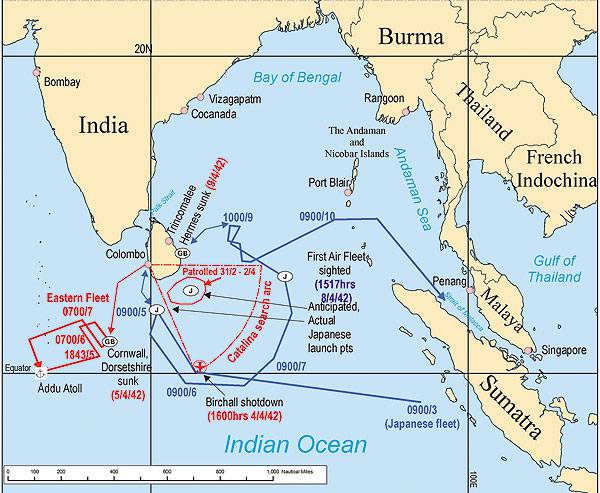
Map of the Indian Ocean Fighting, April 1942 (Sitemap wiki.gcdn.co)
The strike carrier-based compound of the Japanese fleet was headed by Vice-Admiral T. Nagumo. It included five aircraft carriers (Akagi, Soryu, Hiryu, Shokaku, and Dzuikaku) and 15 combat escort ships (including four battleships and three cruisers). Aircraft carrier groups accounted for almost 300 combat aircraft (Mitsubishi A6М2 Zero fighters, Aichi dive bombers D3А1 and Nakjima torpedo bombers B5N2 Kate).
The British command of the Eastern Fleet, thanks to intelligence, became aware of the impending Japanese attack on the bases on the island of Ceylon. The main forces of the British fleet were withdrawn from Colombo and Trincomalee and concentrated in the area of the Maldives. Already from there, when the Japanese fleet attacked the strike forces in the direction of Ceylon, the British command planned to launch a pre-emptive strike on the aircraft carrier groups of its two aircraft carriers before the approach of the aircraft carrier to the line of attack (takeoff of the aircraft).
The Indomitable and Formidable air groups accounted for a total of about 82 combat aircraft (12 Fulmar Fighter MK.I, 9 Hawker C-Hurricane fighter, 16 Grumman Fighter, Martlet M.I and XNMUMMETM fighter jets and MINNIMENTMUM and 45MUM and XNUMXMM and XNUM and MNI CHI MUM) »" Albacore "MKI).
Fae Fighter "Fulmar" Mk.II 809 Squadron, 1942 g. (Fig. Wardrawings.be site)
Double deck fighter "Fairy" "Fulmar" MK.I made its first flight in the 1937 year. It was a single-engine all-metal nizkoplan with the “Merlin” VIII engine of liquid cooling with 1080 horsepower, which provided the aircraft with a maximum speed of 398 km per hour and a climb rate of 366 meters per minute. The flight range was 1260 km, and the practical ceiling 6555 meters.
In flight “Fairies” “Fulmar” Mk.I (Photo site www.airwar.ru)
The Fulmar MKI fighter turned out to be overweight with relatively low speed and climb rates compared to the more speedy and agile Mitsubishi А6М2 Zero, which adversely affected the results in air battles with this fighter.
Deck fighter "Fairy" "Fulmar" Mk.I (Fig. Site www.scalefan.ru)
The Fulmar Mk.I was armed with eight 7.7-mm machine guns mounted in the wings. The navigator-observer, who was sitting behind the pilot, did not have any regular weapons, but in practice he sometimes used his personal weapon (Thompson Submachine Gun).
Fighter "Hawker" "Hurricane" Mk.I (Fig. Site wardrawings.be)
The Hawker single-handed fighter Hurricane Mk.I made its first flight back in 1935. A single-engine low-wing aircraft was equipped with a Rolls-Royce Merlin III engine with a horsepower 1030. The aircraft developed a maximum speed of 520 km per hour. The practical ceiling was 10425 m, and the practical range 845 km.
Hurricane Mk.I at Fairford Air Show, 10 July 2014 (Photo by en.wikipedia.org)
In 1940, the British equipped the land Hurricane Mk.I with a brake hook and got the deck fighter “Sea Hurricane” Mk.IV, which had a slightly lower maximum speed in 508 km per hour, practical 9360 ceiling of meters and 785 km range.
Deck fighter "Hawker" "Sea Hurricane" Mk.IB - 1942 coloring page (Figure. Site wardrawings.be)
The armament of both Hurricanes consisted of eight 7.7-mm machine guns mounted in the wings. The fighter pilot was protected by an armor and armored glass mounted in the visor.
"Sea Hurricane" Mk.II 880 th Squadron of the aircraft carrier "Indomitable", May-June 1942 g. (Figure wardrawings.be site)
Slightly inferior to the Japanese Mitsubishi A6М2 Zero fighter in speed, the Hurricane Mk.I had much worse maneuverability.
"Sea Hurricane" Mk.IB at our Shattleworth Air Show, our days (Photo site en.wikipedia.org)
The British carrier-based fighter "Martlet" ("Swallow") was an export version of the American fighter "Grumman" F4F-3 (F4F-3A) "Wildcat", made its first flight in the 1939 year.
Grumman F4F-3 Wildcat in flight (Photo from en.wikipedia.org)
It was a single-seat all-metal sredneplan with an 1200 engine of horsepower, which accelerated the Martlet MKI modification to a speed of 531 km per hour at an altitude of 6431 m and a speed rating of 702 meters per minute. The practical ceiling was 12000 m, and the flight distance reached 1360 km. Modification of the fighter Mk.II (F4F-3A) had somewhat worse indicators of speed (maximum speed up to 502 km per hour at a height of 4877 m) and altitude.
"Martlet" Mk.II from the 888 Squadron of the aircraft carrier Formidable, May 1942 (Fig. Wardrawings.be site)
Fighter "Grumman" "Martlet" Mk.I (Mk.II) was armed with four 12.7-mm machine guns mounted in the wings. The pilot was protected by armored.
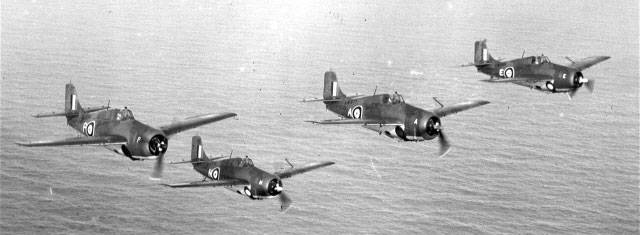
Marlet fighters of the Mk.II 888 th squadron of the aircraft carrier "Formidable", 1942 (Photo of the site www.hobby-plus.narod.ru)
The British fighter "Martlet", part of the aircraft group of the aircraft carrier "Formidable", during the battles near the island of Ceylon was not able to fight with the air enemy.
Torpedo bomber "Fairy" "Albacore" TV MKI (Fig. Site wardrawings.be)
Attack aircraft on both British aircraft carriers represented the “Tori” torpedo bomber “Albacor”. A single-engine biplane with a closed cockpit and a non-retractable landing gear first flew into the 1938 year. In terms of its technical characteristics, it was not very different from its predecessor, the Fairy torpedo bomber, the Suordfish, which had to be replaced. With an 1085 horsepower engine, the maximum speed of a torpedo bomber was 256 km per hour and cruising speed was 187 km per hour. The practical range of the flight was equal to 1500 km, the practical ceiling was 6310. The maneuverability and controllability of the Albacore were worse than that of the Suordfish.
In flight "Fairies" "Albacore" Mk.I (Photo site en.wikipedia.org)
A torpedo bomber carrying one 730-kg torpedo under the fuselage could be either bombs under wings (6 for 113 kg or 4 for 227 kg). One 7.7-mm machine gun was mounted on the right wing console and two 7.7-mm in the rear part of the triple cab.
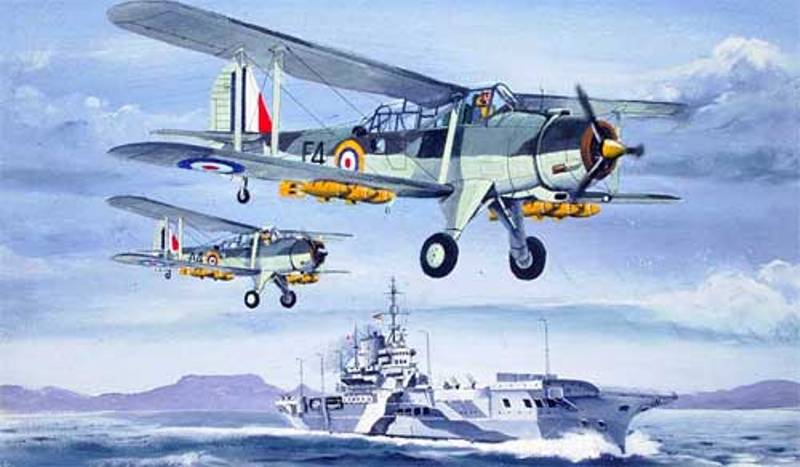
"Fairy" "Albacore" with bomb weapons (Figure wowar.ru site)
In the events discussed below, the Albacore torpedo bomber was not claimed for its intended purpose and was used for reconnaissance purposes.
Having received information from intelligence about the advancement of Japanese attack forces to Ceylon, the commander of the British Eastern Fleet, Admiral Somerville, relying mainly on his vision of the current operational situation, could not correctly predict the line of attack of the Japanese aircraft carrier. Counterattack shock forces of the Japanese fleet did not work.
On 8.00 in the morning of April 5, Japanese aircraft hit 1942 on the harbor and port of Colombo. Due to the lack of combat ships in the base, the main targets of the B5N2 “Kate” torpedo bombers and the D3A1 “Vel” dive bombers were auxiliary and merchant ships, port infrastructure facilities that were significantly damaged.
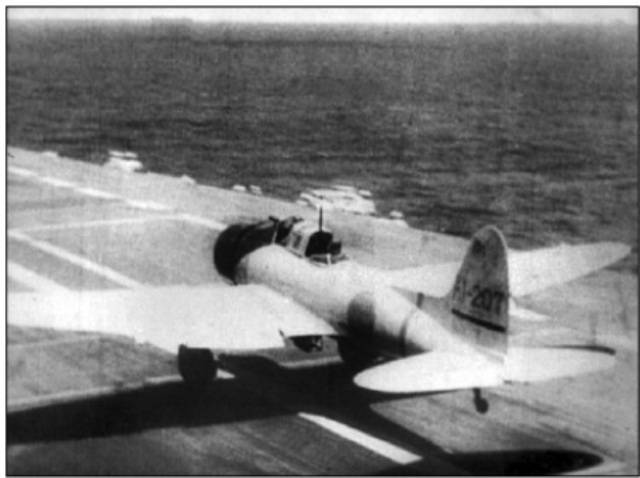
Take-off of the diving bomber "Aychi" D3A1 "Val" from the deck of "Akagi" 5 April 1942 (Photo from the book A. Patients "Aircraft carriers. Illustrated Encyclopedia", 2013)
The British, thanks to radars, learned in time about the approach of the enemy's strike aircraft, but the British fighter planes raised with obvious delay of the 42 could not provide decent resistance and repel the air attack of more than 125 Japanese aircraft. The British ground Hurricane Mk.I and the naval Fulmar Mk.I were noticeably inferior to the A6МXNNXX Zero fighter that accompanied the strike aircraft. According to the results of the air battle, the British lost 2 fighter. Japanese losses amounted to one Zero fighter and several dive bombers.
Discovered by Japanese aviation that day, a detachment of British fleet ships consisting of two heavy cruisers, Devonshire and Cornwall, which separated from the main forces of the fleet, was attacked by 53 D3A1 Val dive-bombers. After a 19-minute battle, the cruisers were sunk. Japanese aircraft did not suffer losses.
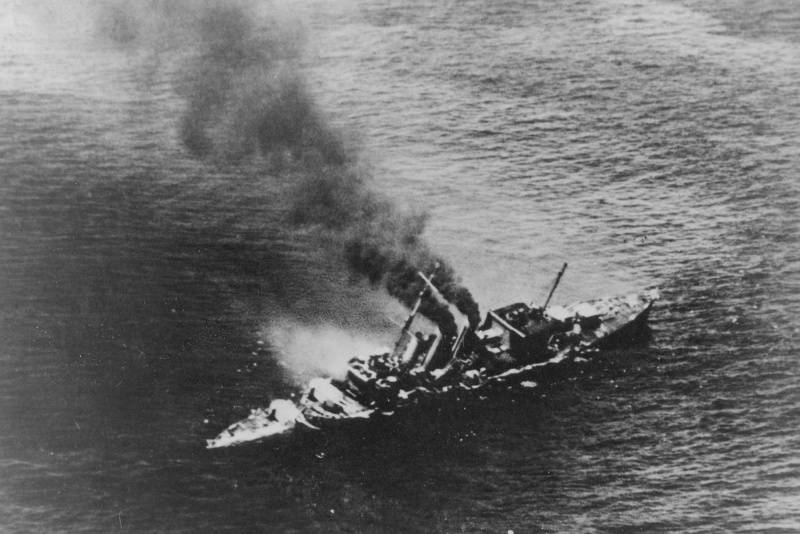
British heavy cruiser Cornwall (05.04.1942) is burning (Photo from A. Patients' book, Aircraft Carriers. Illustrated Encyclopedia, 2013)
Not finding the main forces of the British fleet in Colombo, the Japanese command decided to deliver a second blow to the British base at Trincomalee. To achieve surprise was not possible at this time. Japanese ships were discovered by 8 on April 1942, the British Catalina (flying boat) at a distance of nautical miles in 450. The British ships at that moment in Trincomalee left the base. In their composition was the aircraft carrier "Hermes" with a little escort.
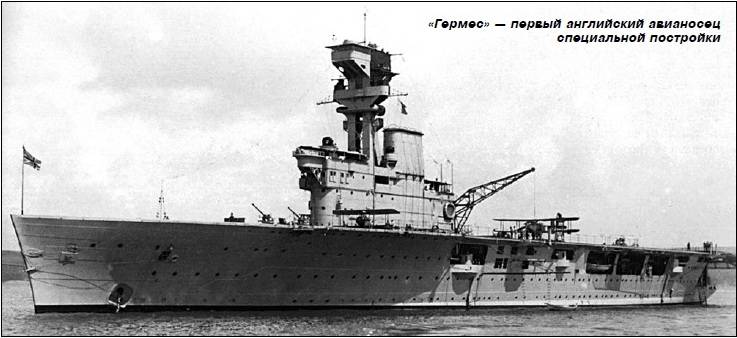
Hermes is the first special-purpose aircraft carrier in the world (Photo from A. Patients' book, Aircraft Carriers. Illustrated Encyclopedia, 2013)
On the morning of April 9, the 91 D3-1 Val dive bomber, accompanied by the 39 A6-XNNUMX Zero fighters, launched an air strike against the merchant ships and port facilities in the Trincomalee port. This air armada of the British were able to oppose only 2 fighters "Hurricane" (of which only 11 aircraft survived).
The aircraft carrier Hermes that left Trincomalee and the Australian destroyer who accompanied him were discovered by a Japanese reconnaissance aircraft, when the attack air group that bombed Trincomalee was just returning to its ships. To attack a new target, Admiral Nagumo took to the air a new attack air group consisting of 85 D3A1 Vel and 9 Zero fighters.
The Japanese overtook Hermes on the same morning of April 9 on 10.35. Not having its own deck fighters, deprived of the support of coastal aviation (the team on their departure sank in the chaos of what was happening), Hermes was doomed. According to eyewitnesses, the aircraft carrier was hit by more than 20 bombs and twenty minutes later, turning the keel up, sank. The Australian destroyer also perished.
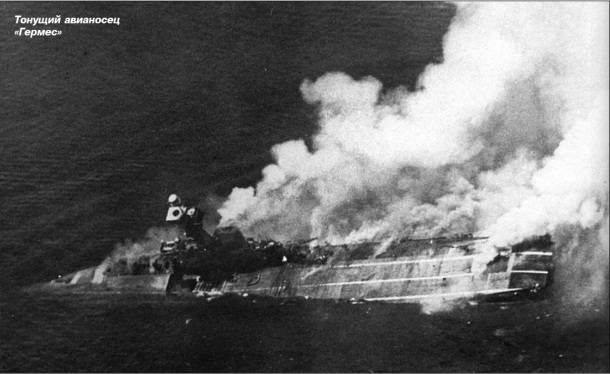
The sinking British aircraft carrier Hermes is burning (Photo from A. Patients' book, Aircraft Carriers. Illustrated Encyclopedia, 2013)
The tragedy of this situation was aggravated by the fact that, being the first aircraft carrier in the world of special construction, the Hermes became the first aircraft carrier sunk by deck aircraft.
During the attack of the Hermes by the Japanese, the flagship of Vice Admiral Nagumo, the aircraft carrier Akagi itself came under a sudden attack by nine Blenheim British bombers. Anti-aircraft artillery "Akagi" and the accompanying cruiser "Tone" could not hit any of the "Blenheim" bombed on them. After the attack of the flagship of the Japanese, British bombers were attacked by Zero fighters, who were able to shoot down only four out of nine aircraft.
Medium bomber "Bristol" "Blenheim" Mk. IV with a crew of three people carried up to 454 kg of bombs and had defensive armament of seven 7.7-mm machine guns (Photo site www.birdsofsteel.com)
As a result of the campaign against Ceylon, the Japanese did not manage to defeat the British Eastern Fleet, but, nevertheless, inflicting significant damage on the enemy, both at sea and on land (the bases in Colombo and Trincomalee were destroyed), forced the British to abandon their base in Ceylon and the Maldives and leave the Bay of Bengal.
The success of the Japanese fleet contributed to the superiority in aircraft carriers, the massive use of carrier-based aircraft, as well as British errors in the organization of defense and miscalculations in the strategy of their actions. Meanwhile, the Japanese fleet failed to completely conceal its actions and achieve surprise in the implementation of air strikes.
Battle in the Coral Sea
After a successful march on Ceylon in April 1942, relying on possession of a strategic initiative in their hands, the Japanese command sought to completely seize New Guinea and the Solomon Islands, control the waters of the Coral Sea and put pressure on Australia. A major obstacle to such plans was the Australian base in Port Moresby, located in the south-east of New Guinea.
Preparations for the seizure of Port Moresby were started by the Japanese command back in February 1942, with the publication of the relevant directive. The real preparations for the landing operation unfolded in April. To provide airborne support for the main forces during the seizure of Port Moresby, the Japanese planned to seize Tulagi Island (Solomon Islands) at the first stage for basing their aircraft on it.
To cover airborne forces from the air, the Japanese command allocated the light aircraft carrier Sikho (12 fighters АХNUMXМ6 Zero and 2 of torpedo bombers B9N5 Kate).
The main striking force in the operation was the carrier connection under the command of Vice-Admiral Takagi consisting of two aircraft carriers ("Shokaku" and "Dzuykaku") and escort ships (two cruisers and six destroyers). Aircraft Squadron Group
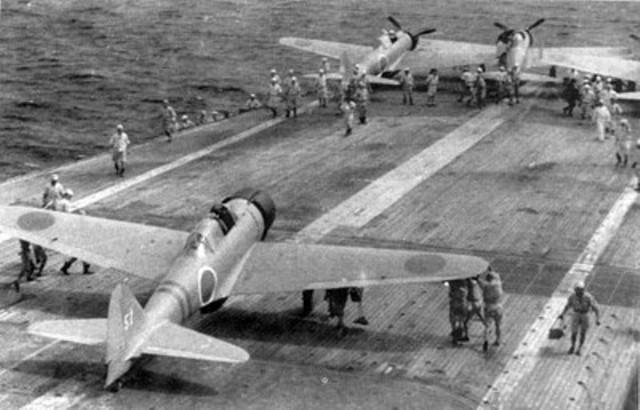
Fighters А6М2 "Zero" on the deck of the aircraft carrier "Zuykaku" (Photo site scalemodels.ru)
The Japanese’s plans to seize Port Moresby were not a secret for the Allied Command, which, knowing the secret cipher, received information from the enemy’s correspondence. Measures were taken to strengthen the forces and assets in threatened areas.
By the decision of the Pacific Fleet Commander Admiral Nimitz, 17 was formed. The operational connection under the command of Rear Admiral FD. Fletcher consisting of two squadron aircraft carriers, escort ships (8 cruisers and 13 destroyers) and support (two tankers).
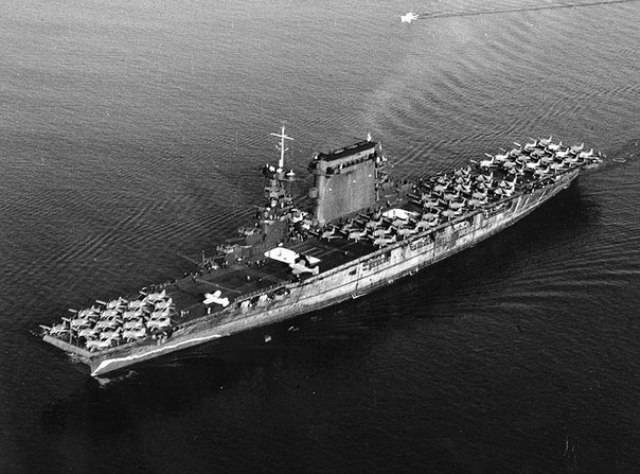
Lexington USS aircraft carrier with its own air group, 1942. (Photo site ww2live.com)
The air groups of two US aircraft carriers (Lexington and Yorktown) included X-9000 X-9000 X-900 X-900 X-900 X-900 X-900 X-900 X-900 X-9000 X-9000 X-960 Grumman F143F-44 and F4F-4A Wildcat, 4 diving Dus glus-17G bomber, and a -2012-a-offs. Douglas "TBD-3" Devastate ").
Grumman fighter F4F-3A Wildcat, May – June 1942 (Fig. Wardrawings.be)
The main carrier-based fighter on US aircraft carriers was the Grumman F4F-4 Wildcat, which almost supplanted the previous modification F4F-3 (F4F-3A). An engine of the same power in 1200 horsepower possesses the best high-altitude performance. The maximum flight speed at the same time decreased slightly (515 km per hour at an altitude of 5730 m), but the rate of climb significantly increased from 702 (624) to 880 meters per minute. According to the pilots, the new modification of the fighter turned out to be less maneuverable and more inert.
Grumman Fighter F4F-4 Wildcat, 1942 g. (Fig. Wardrawings.be)
The fighter received folding wings, which made it easier to place it on the flight deck and in the hangars of the aircraft carrier. The hydraulic wing folding mechanism, which was developed later, didn’t take root in practice due to the saving of take-off weight.
Fighter "Grumman" F4F-4 "Wildcat" takes off from the deck of an aircraft carrier, 1942 g. (Fig. Pinimg.com site)
F4F-4 Wildcat had more powerful weapons: the number of 12.7-mm machine guns increased from four to six. In this case, the total ammunition decreased from 1720 to 1440 cartridges. Under the wings could be suspended two bombs on 113-kg.
The pilot’s protection improved: an armored car appeared under the seat and the armor spike size increased. The F4F-4 has received the protected fuel tanks and the armor protection of the oil radiators.
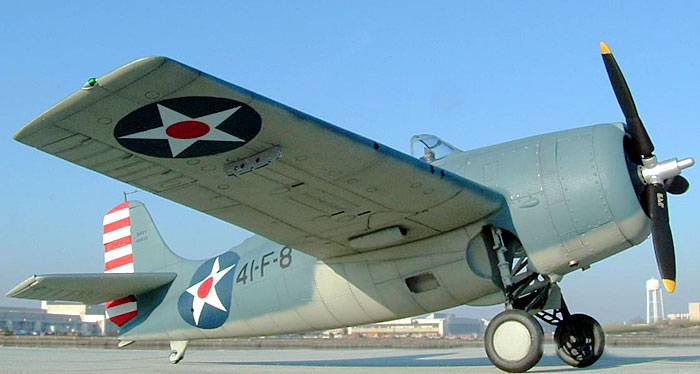
The surviving F4F-4 Wildcat (Photo by allwantsimg.com)
F4F-4 "Wildcat" in air combat with its main rival - the Japanese fighter "Mitsubishi" А6М2 "Zero" noticeably inferior to him in maneuverability. However, a slightly better rate of climb and the ability to quickly pick up speed in a dive allowed the experienced pilot F4F-4 to go into a frontal attack and destroy the enemy with a powerful volley of six 12.7-mm machine guns. The exact second volley of Wildcat ripped the Zero in the air literally to pieces.
Fighter F4F-4 "Wildcat" in a duel with A6М2 "Zero", 1942 g. (Fig. Site img.wp.scn.ru)
F4F-4 possessed higher survivability in comparison with А6М2 "Zero", withstanding numerous hits. When landing on the water, having a small reserve of buoyancy, the fighter provided the pilot with the opportunity to leave the plane in a few minutes in a rescue boat. At the same time, the more narrow gauge of the Wildcat chassis complicated its landing on the deck, and in the hands of less experienced pilots could lead to an accident, the death of the pilot and the loss of the aircraft.
Mitsubishi fighter A6M2 Zero, 1942 g. (Fig. Wardrawings.be site)
At the time of the entry of the United States into World War II, the Douglas torpedo bomber TBD Devastate, which made its first flight back in 1935, was already considered obsolete. The all-metal nizkoplan had wings folded for ease of placement on the deck and was equipped with an 900 horsepower air-cooled engine. The crew was placed in a triple cabin in tandem.
Torpedo-carrier TBD-1 "Devastate" from the aircraft carrier "Lexington", May 1942 (Fig. Wardrawings.be site)
In horizontal flight, the torpedo bomber developed a maximum speed of 332 km per hour (without outboard armament) and maintained a cruising speed of 205 km per hour. Low landing speed in 100 km per hour, acceptable maneuverability and good handling made landing on an aircraft carrier an easy task even for poorly trained pilots. In comparison with classmates, Devastate had not high flight range (700 km with torpedo) and practical ceiling (5945 m).
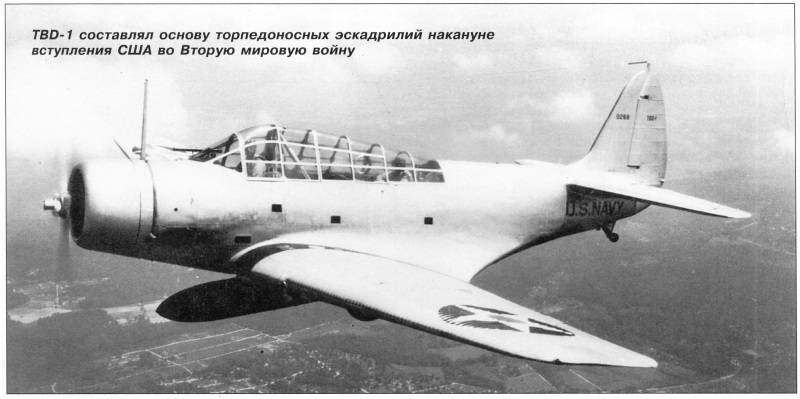
Douglas torpedo carrier TBD-1 Devastate (Photo from A. Haruk’s “Second Air Force Attack Aircraft of the World War - attack aircraft, bombers, torpedo bombers”, 2012)
The main armament of the “Devastajtor” was considered to be the 907-kg torpedo Mk.13, which was distinguished by an unreliable fuse, body defects and low speed. Instead of a torpedo, two 277-kg or 454-kg bombs could be suspended. The rifle armament included one synchronous 7.62-mm machine gun in front of the pilot's cabin and one turret 7.62-mm machine gun, from which led the gunner-radio operator.
"Douglas" TBD-1 "Devastate", armed with a torpedo (Fig. Site www.artes.su)
With a suspended torpedo, the TBD Devastate was distinguished by its low maneuverability, which resulted in heavy losses from shipboard anti-aircraft artillery during the attack.
Acting on the plan, the Japanese 3 May 1942, landed troops on the island Tulagi, located north-east of the island of Guadalcanal (Solomon Islands). Troops on the island at the time of disembarkation was no longer, the Australian garrison left it in advance.
Having received a message from intelligence about the capture of the Japanese by Tulagi, the Allied command decided to launch an air strike against the landing forces. The air group of the American aircraft carrier "Yorktown" in the early morning hours of May 4 struck the Japanese ships in the harbor of the island. The 28 dive-bomber SBD-3 “Dutless” and 12 torpedo bombers TBD-1 “Devastaytor” took part in the air raid under the cover of 18 fighters “Wildcat”. The results of three successive air raids (4 combat sorties) were modest: four landing barges were sunk, a destroyer and a couple of minesweepers, several enemy ships were damaged. The losses of "Yorktown" were two fighters "Wildcat" and one torpedo bomber "Devastate".
A more important result of the strike of the air group "Yorktown" was, according to military historians, the fact that the Japanese command was aware of the fact that the enemy had revealed its intentions. The landing of the main landing forces and the seizure of Port Moresby had to be temporarily postponed until the destruction of the Allied aircraft strike formations.
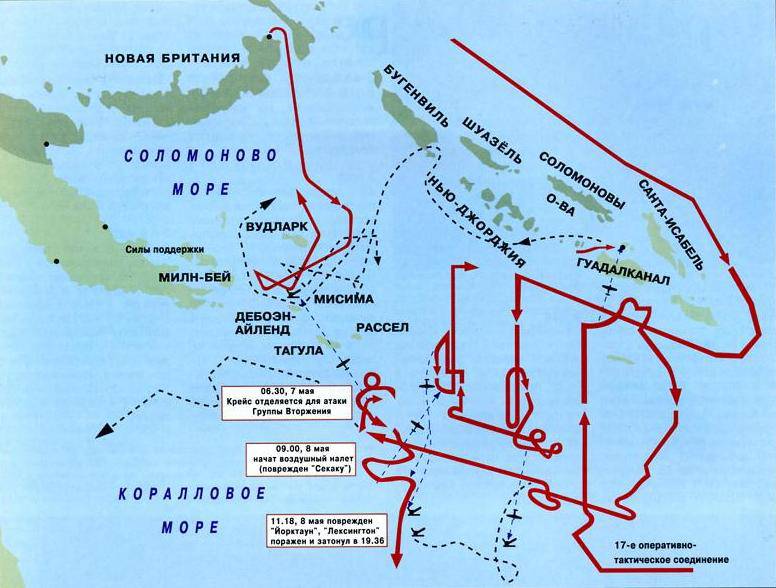
The scheme of actions of the opposing sides in the Coral Sea (Photo site ww2history.ru)
Over the next two days, the opposing sides made efforts to mutually search for the main forces. The success of the upcoming battle depends on the one who finds out first and strikes the enemy first.
6 May Four American heavy bombers B-17 "Flying Fortress" from the Port Moresby airbase accidentally discovered and attacked the Japanese light aircraft carrier "Sёkho", without causing him any damage.
Mutual searches continued. Inaccurate intelligence, the rush to make decisions and the banal case led to the fact that the opponents in the morning of the next day launched air strikes on secondary targets. The direct duel of the aircraft carrier connections was still ahead.
So, in the morning of May 7, the American tanker Neosho and the destroyer Sims came under attack by Japanese aviation. The strike group from the aircraft carriers "Shokaku" and "Zuikaku" sank the destroyer with direct hits of three bombs. The tanker "Neosho" after hitting seven aerial bombs lost speed and caught fire, but did not sink, as the Japanese thought, leaving him in thick puffs of smoke. The losses of the attacking side amounted to two aircraft. In the evening, the squadron destroyer of the Americans interrupted the agony of the tanker with two torpedoes and took the survivors.
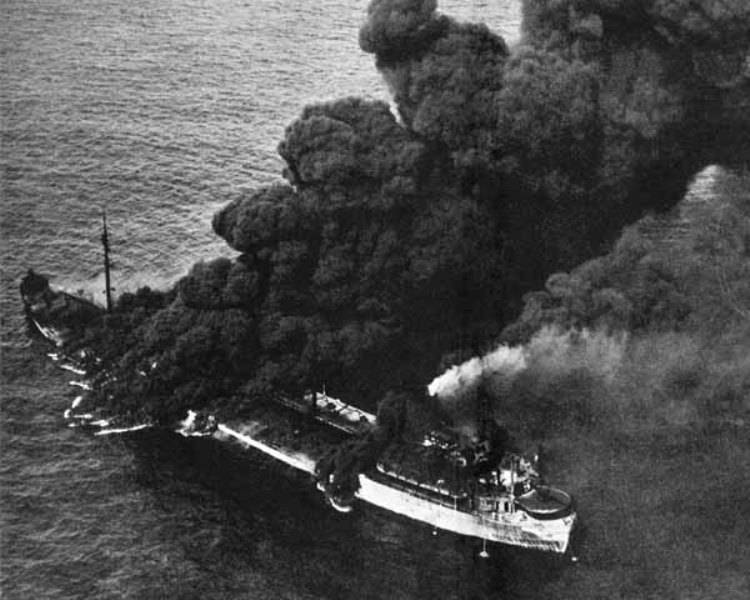
American tanker "Neosho" is on fire, 7 May 1942. (Photo by www.delsjourney.com)
In turn, the light aircraft carrier Sёkho came under attack from the American aircraft carriers Lexington and Yorktown. The 93 decked aircraft took part in the raid.
An unexpected attack did not allow the "Shohoe" to raise their fighters. Left without air cover, the aircraft carrier lasted no more than a quarter of an hour. A direct hit by 13 1000-pound SBD-3 dwightless dive bombers and seven torpedoes from Devastajtor caused numerous fires, a violent explosion, after which Sёkho turned over and sank. The Americans lost only three aircraft during the raid.
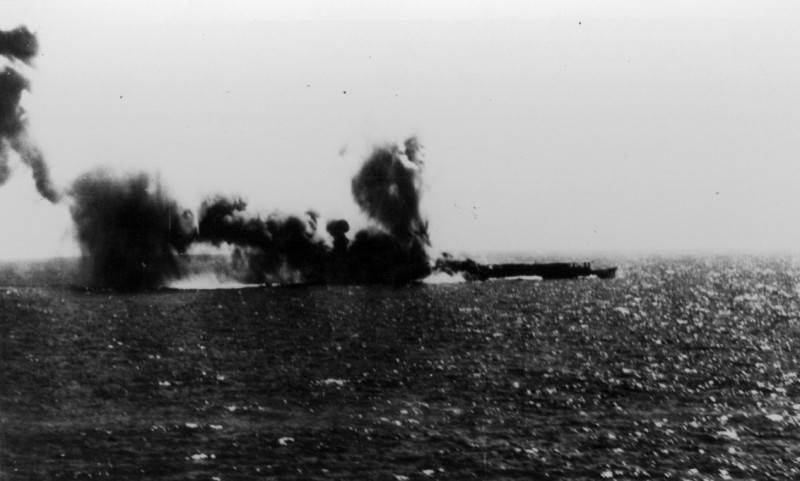
Japanese sinking aircraft carrier Shokho, 7 May 1942, is lit. (Photo by www.history.navy.mil)
Later, military historians would question so many direct hits to a non-booking, relatively small ship (about 205 meters in length, full 14200 tons displacement), as a result of which it was simply to be torn apart.
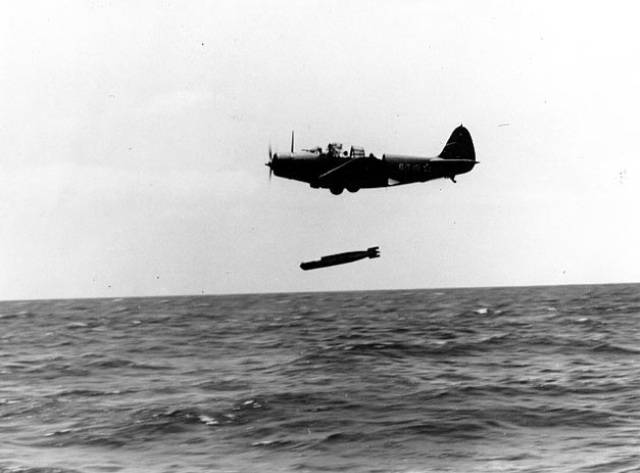
"Douglas" TBD-1 "Devastate" in a torpedo attack (Photo site weapons-of-war.ucoz.ru)
Upon learning of the death of the Sykho aircraft carrier, Vice-Admiral Inoue, the commander of the entire Port Moresby operation, ordered the return of the airborne unit back to Rabaul, located in the north-east of New Britain Island.
On the morning of May 8 1942, the enemy aircraft carrier connections were about 200 nautical miles when their commanders received reports from reconnaissance aircraft about the discovery of the main enemy forces (Americans in 08.20, Japanese in 08.22).
The Vice-Admiral Takagi, commander of the Japanese aircraft carrier, decided to fly into the air an 07.00 combat aircraft in the amount of 69 combat aircraft (33 dive bomber D3A1 "Val" and 18 torpus beaters in the airforce, and then for the last team, and decided to bring the aircraft into the air, and then X. fighter "Zero"). The strike aircraft received a specific combat mission already in the air. The admiral tried to gain time.
American shock Air Group, raised up in the air about 09.15, consisted in its composition 82 combat aircraft from two aircraft carriers (46 dive bombers SBD-3 «Dountless", 21 torpedo bomber TBD-1 «Devasteytor" and 15 fighter cover F4F-4 «Wildcat").
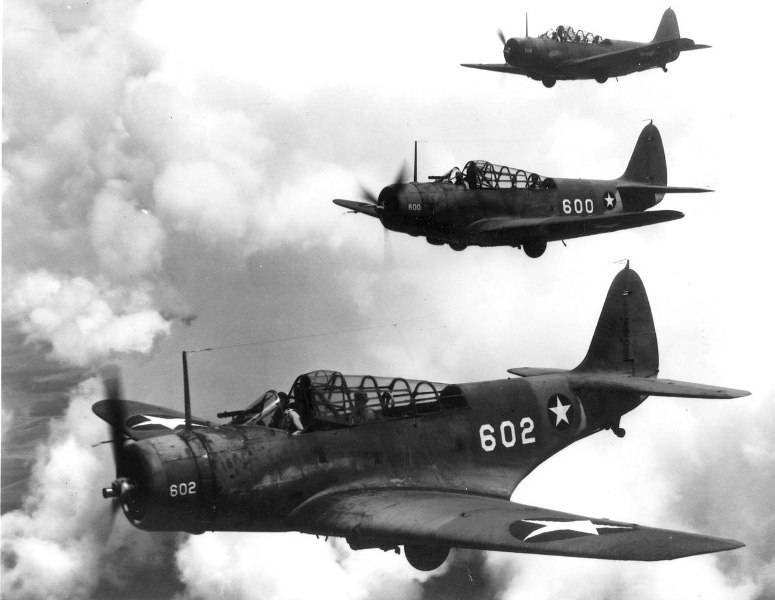
Douglas torpedo bombers TBD-1 Devastate sent to the target, May 1942. (Photo from www.helmo.gr)
Both attack air groups could meet in the oncoming air battle about halfway to the target, but, following at different heights, having no radar, they parted without finding each other.
The Lexington radar promptly detected the approach of the Japanese and made it possible to organize the air defense of the formation.
The weather favored the Japanese shock group. The aircraft carriers Lexington and Yorktown were in good visibility. The Japanese attack began in 11.18. Their main blow fell on the more cumbersome and less maneuverable Lexington, in which two torpedoes hit the port side. The aircraft carrier retained the course and the ability to take planes. A direct hit of two 60-kg bombs caused small fires on the ship. Nothing foreshadowed serious trouble. However, a series of gasoline explosions began on the ship. The fire took rampant, it was not possible to extinguish. At four o'clock in the afternoon a strong explosion damaged the flight deck. The evacuation of personnel began. After the explosion of the cellars with torpedoes, the ship was already doomed. At eight o'clock in the evening after four torpedoes fired by their destroyer, the aircraft carrier sank. Together with the ship, the 36 aircraft of his air group went to the bottom.
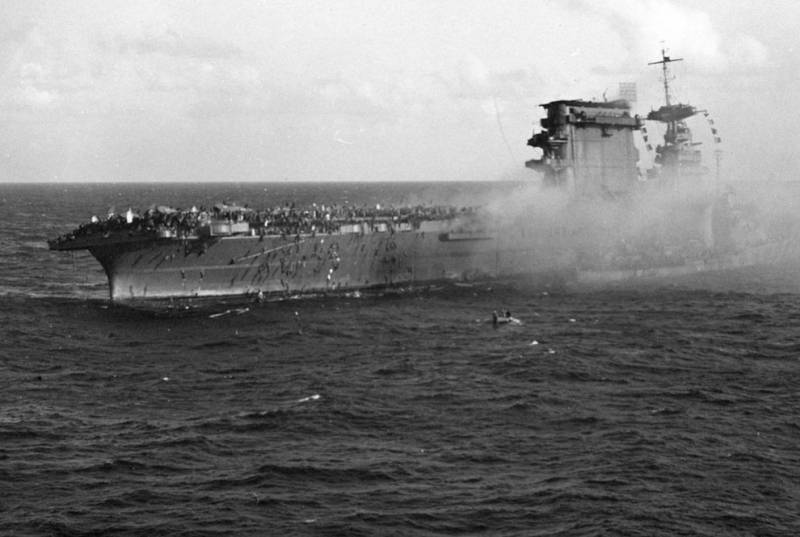
The team of the aircraft carrier "Lexington" leaves the sinking ship, 8 May 1942. (Photo site sfw.so)
The more maneuverable Yorktown avoided torpedoes, a single 800-pound bomb that hit it did not cause him significant damage, the fire caused by it was quickly extinguished. Japanese losses amounted to attack aircraft during the attack of 20.
The air group of the American aircraft carrier Yorktown launched an attack on the Shokaku on 10.57. The second Japanese aircraft carrier "Dzuykaku" managed to hide behind the rain front. The actions of American aviation were extremely unorganized. The air groups of the two aircraft carriers acted inconsistently and not simultaneously. Part of the shock aircraft from the Lexington, not finding the enemy, returned.
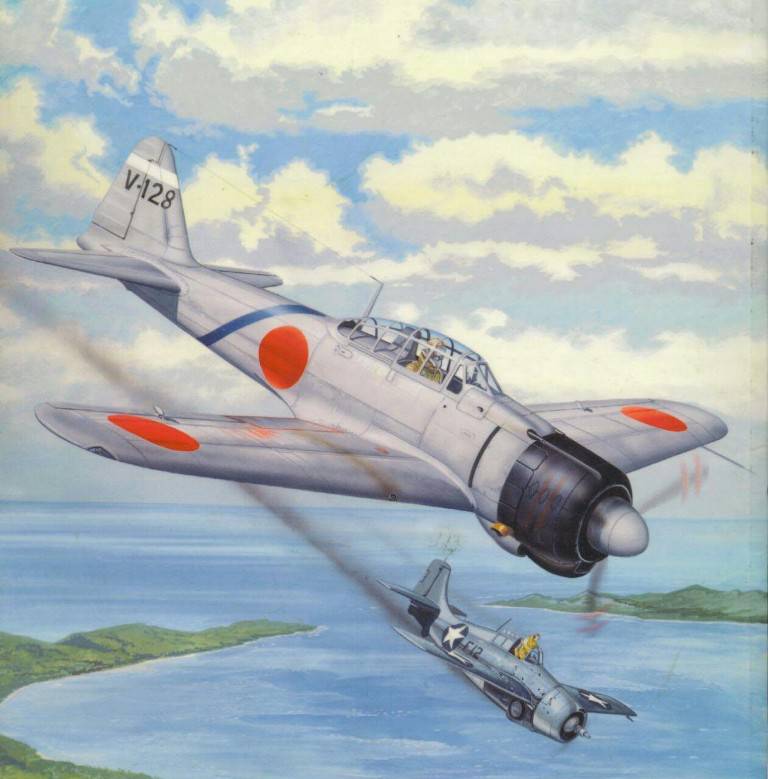
A6М2 "Zero" fighter in air combat with F4F-4 "Wildcat" (Fig. Site media.digitalpostercollection.com)
The results of the Shokaku air strike were disappointing. None of the torpedoes fired at the ship didn’t hit the target, they either passed by or didn’t explode after being hit. Three aircraft bombs hit the aircraft carrier, destroyed the flight deck, the aircraft workshop and caused a fire. "Shokaku" lost the ability to take planes. American losses accounted for 17 aircraft.
SBD-3 downtless dive bombers (Pic. Warwall.ru site)
Douglas torpedo bomber TBD-1 Devastate (Fig. From ftim.ucoz.ru)
The results of the fighting in the Coral Sea were commended by the American command as a whole positively - an attempt to seize Port Moresby, the most important strategic point in the region, was frustrated by naval forces. The Japanese lost one light aircraft carrier "Shokho", damaged "Shokaku" for a long time out of order.
For the first time in stories martial operations at sea, deck aviation became the main striking force of the fleet. Attack aircraft carrier connections operated at a great distance from the enemy, out of sight.
References:
1. Shant K., Bishop. Aircraft carriers. The most formidable aircraft-carrying ships of the world and their aircraft: The Illustrated Encyclopedia / Per. from English / - M .: Omega, 2006.
2. Beshanov V.V. Encyclopedia of aircraft carriers / Under the general editorship of A.E. Taras - M .: AST, Minsk: Harvest, 2002 - (Library of military history).
3. Polmar N. Aircraft carriers: In 2 volumes. T. 1 / Per. from English. A.G. Patients. - M .: AST Publishing House LLC, 2001. - (Military History Library).
4. Patients A.G. Aircraft carrier duels. The climax of World War II! – M.: Yauza: EKSMO, 2011.
5. Patients A.G. Aircraft carriers. Illustrated Encyclopedia - M.: Yauza: EKSMO, 2013.
6. Patients A.G. Pearl Harbor. "Pyrrhic Victory" of the Imperial Fleet - M .: Yauza: EKSMO, 2014.
7. Kudishin I.V. Carrier-based fighters of the Second World War - M .: Astrel Publishing House LLC: AST Publishing House LLC, 2001.
8. Kotelnikov V.R. "Hurricane" fighter. "Hurricanes" in battle - M .: VERO Press: Yauza: EKSMO, 2012.
9. Kharuk A.I. "Zero". The best fighter - M .: Collection: Yauza: EKSMO, 2010.
10. Kharuk A.I. Attack aircraft of the Second World War - attack aircraft, bombers, torpedo bombers - M .: Yauza: EKSMO, 2012.
11. Kharuk A.I. Fighters of the Second World War. The most complete encyclopedia - M .: Yauza: EKSMO, 2012.
Internet resources:
http://www.airwar.ru;
http://pro-samolet.ru;
http://wp.scn.ru;
http://www.aviastar.org;
http://www.avionslegendaires.net;
http://wardrawings.be/WW2;
http://www.airpages.ru;
http://fototelegraf.ru.
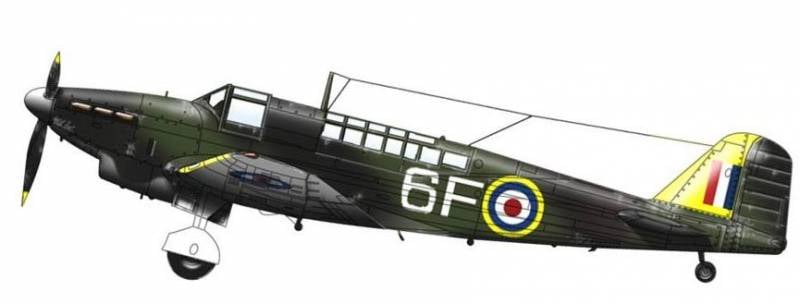
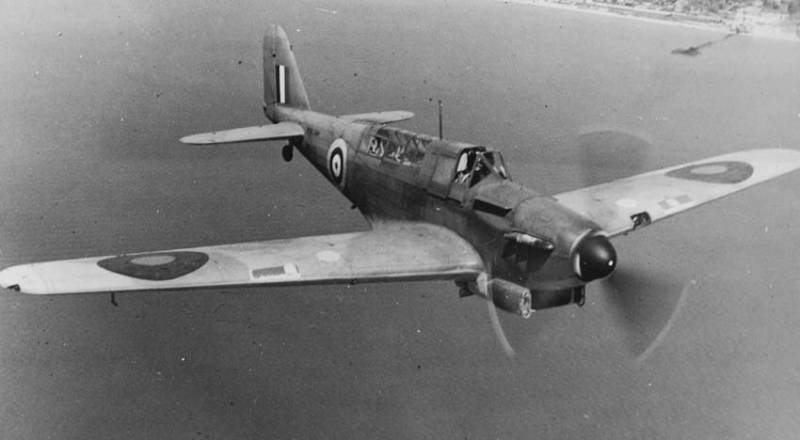
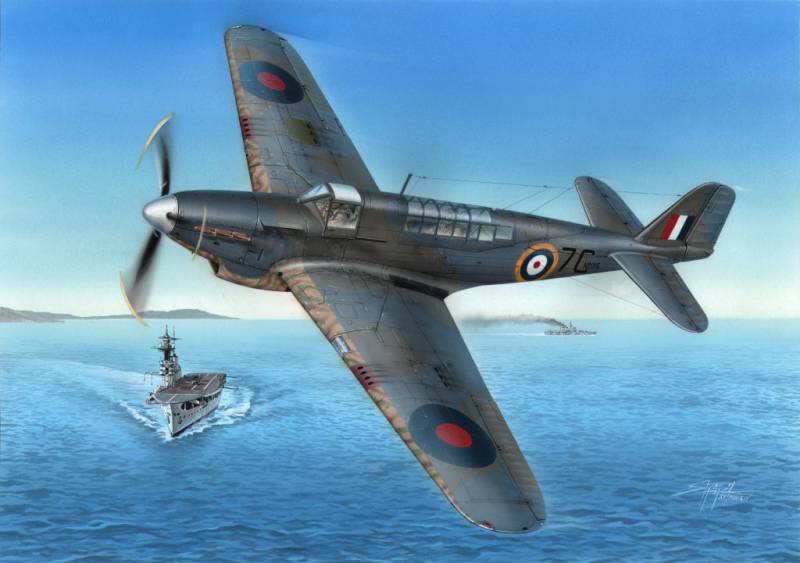

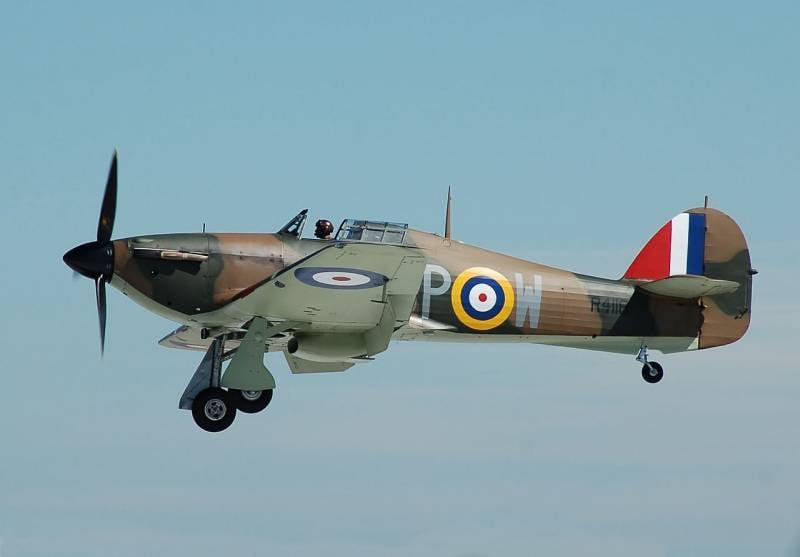
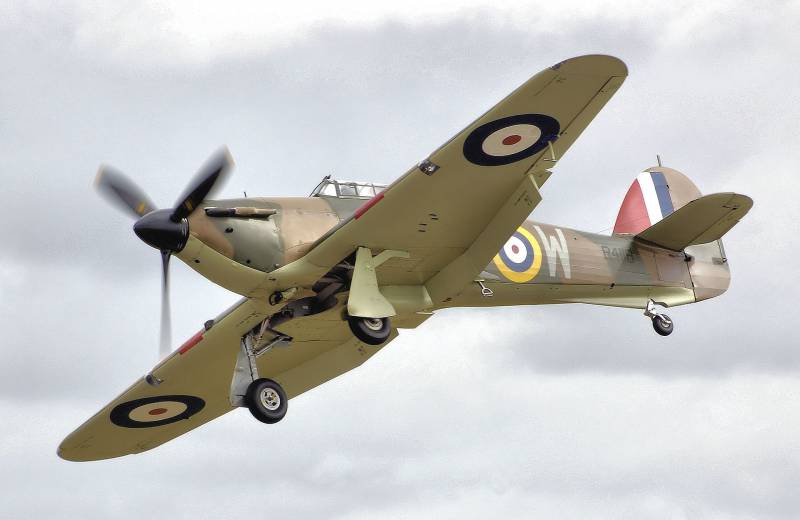


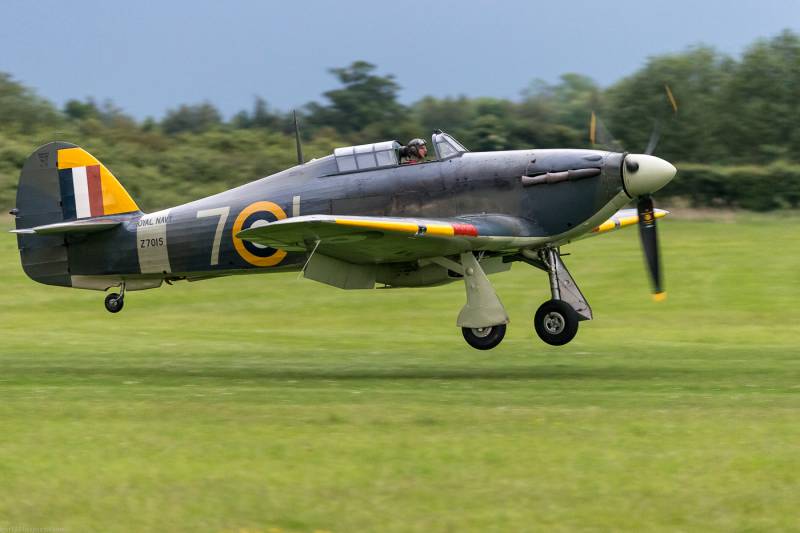
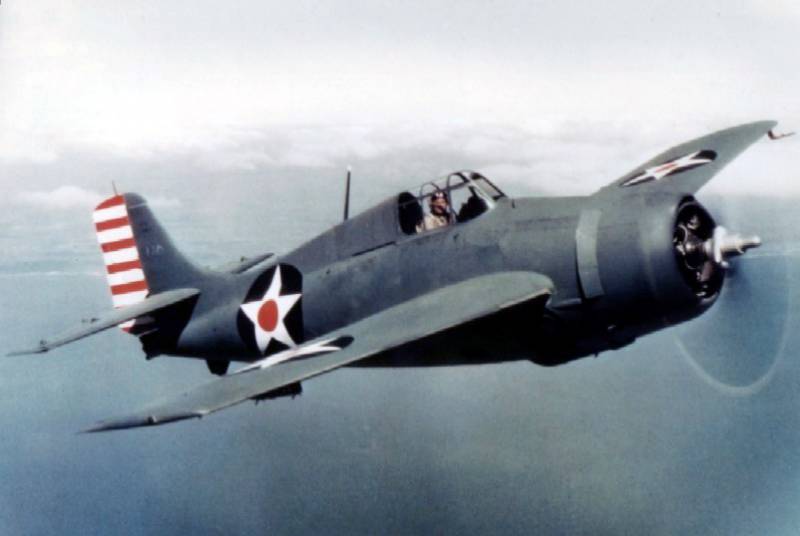
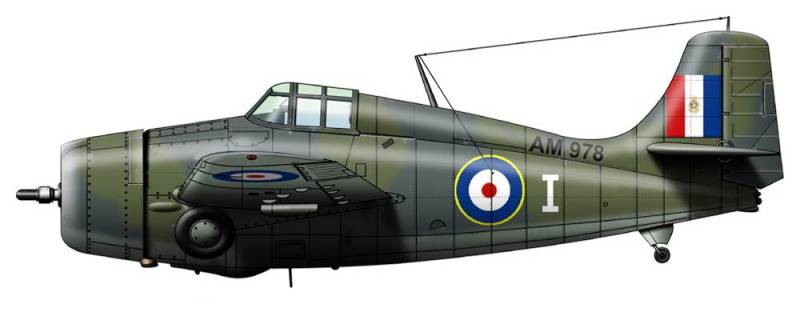
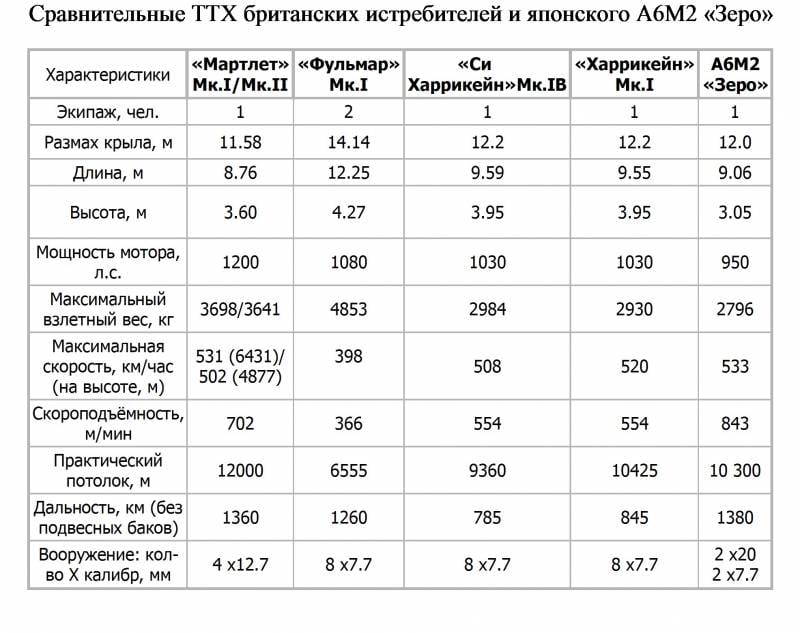
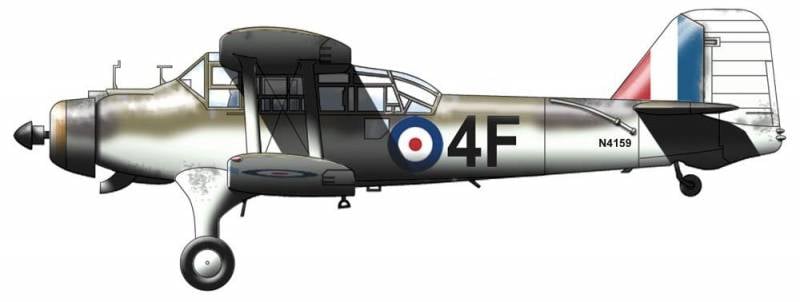
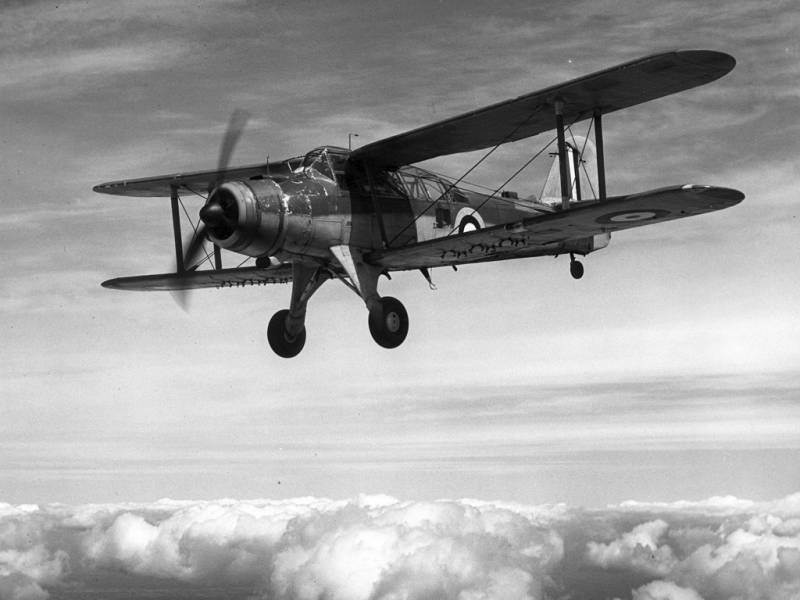
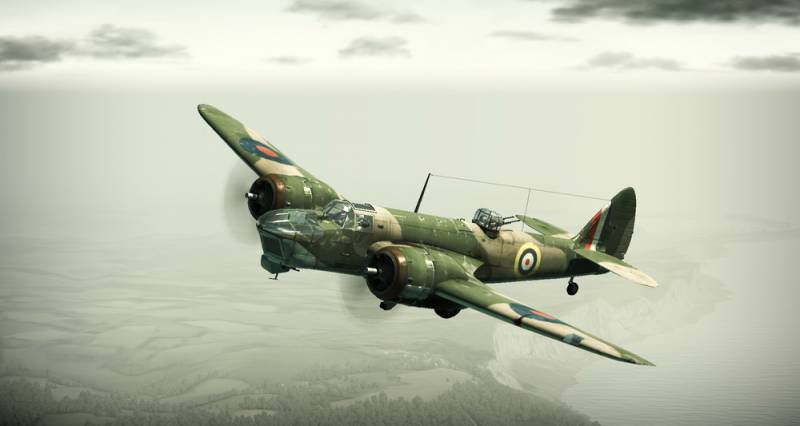
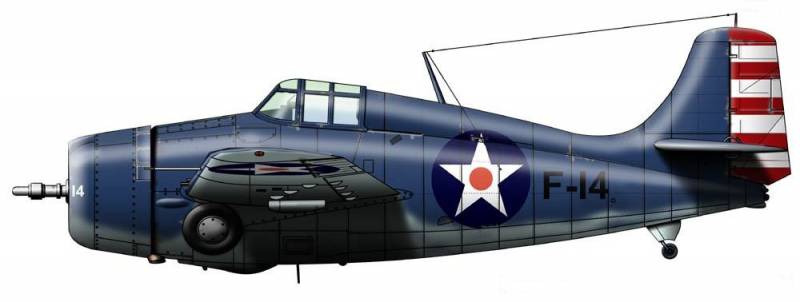
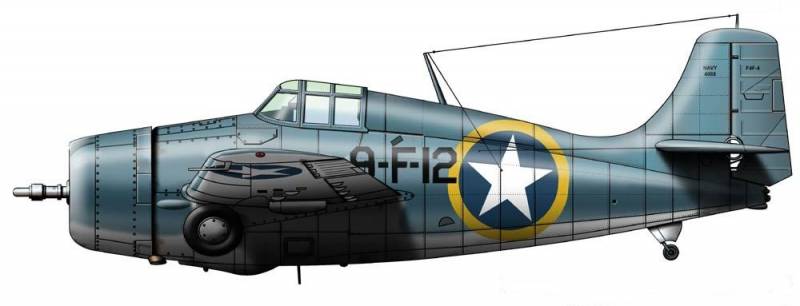
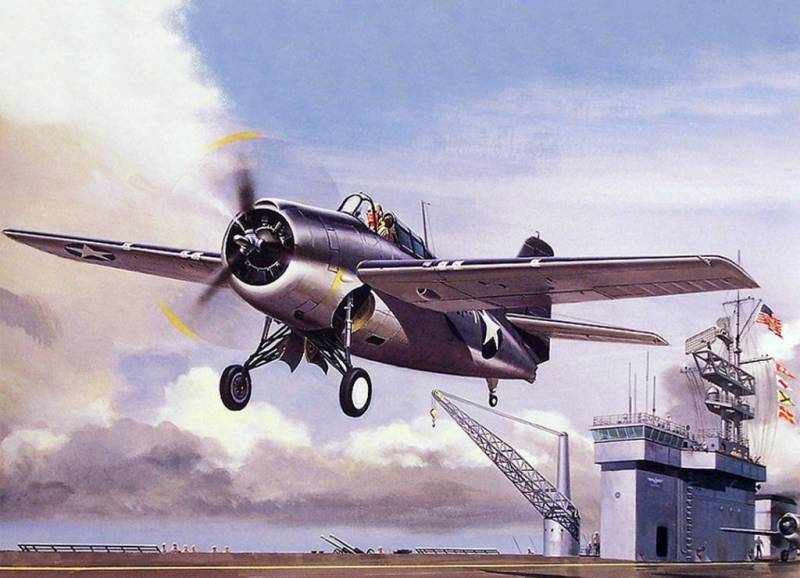
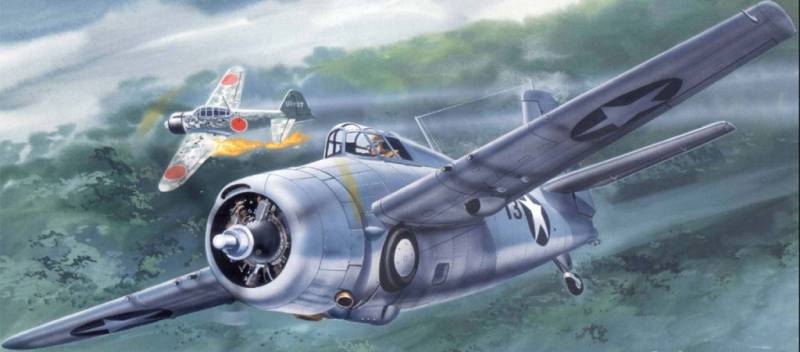
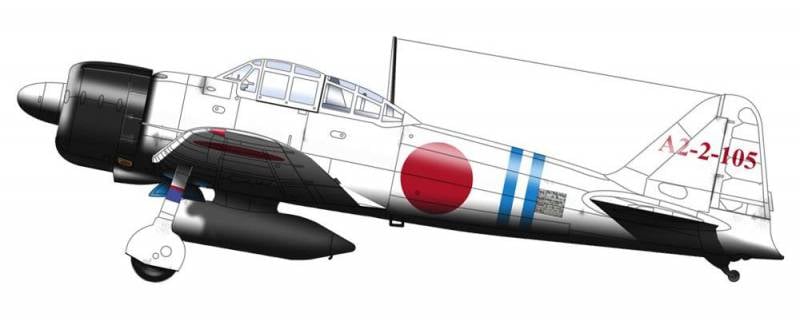
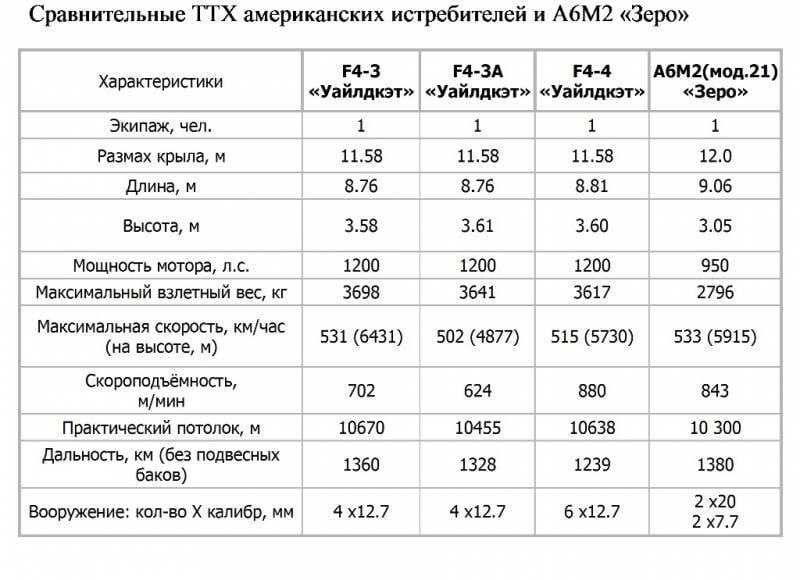
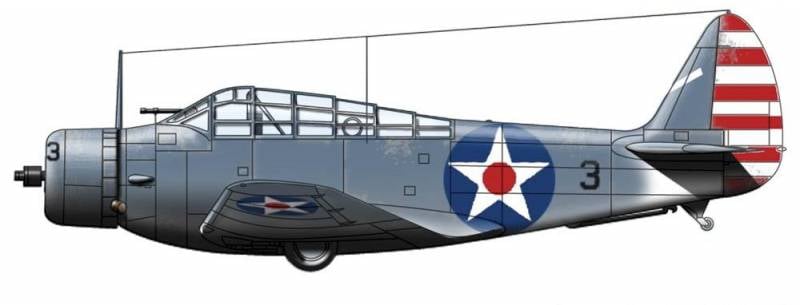
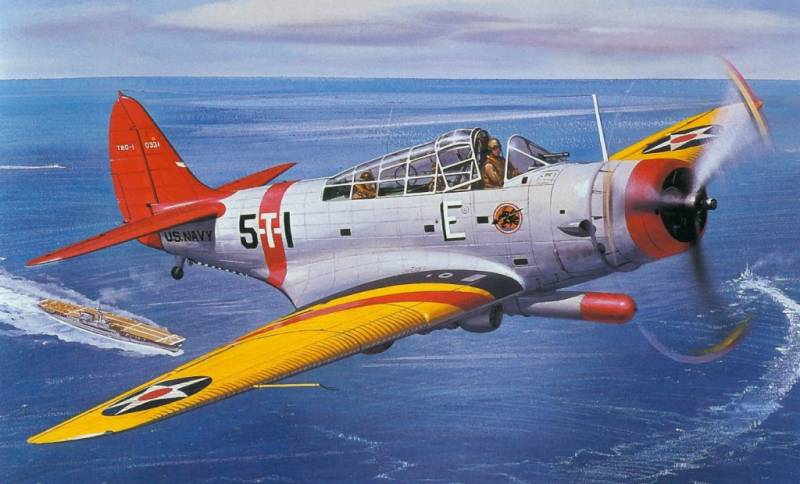
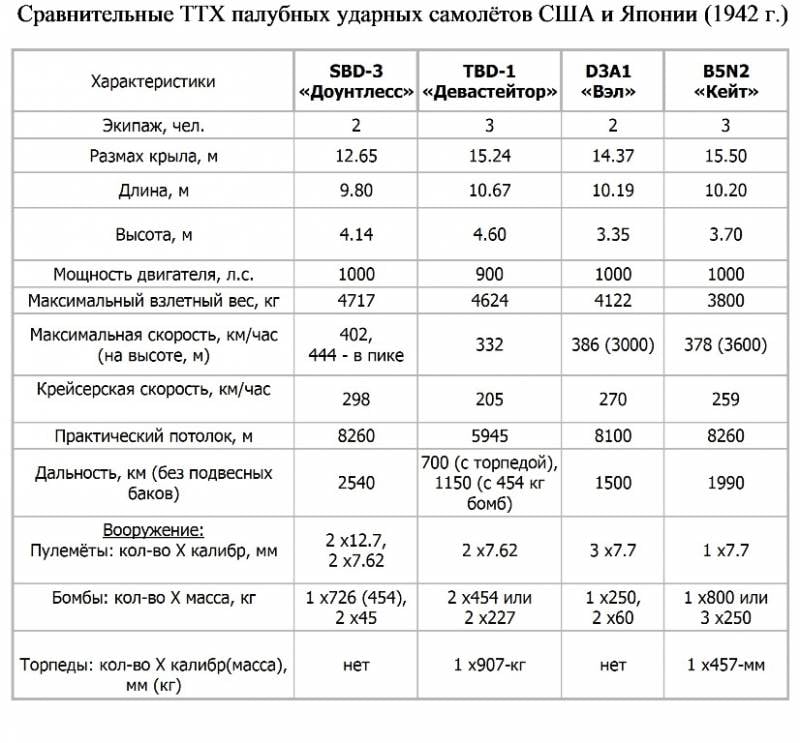
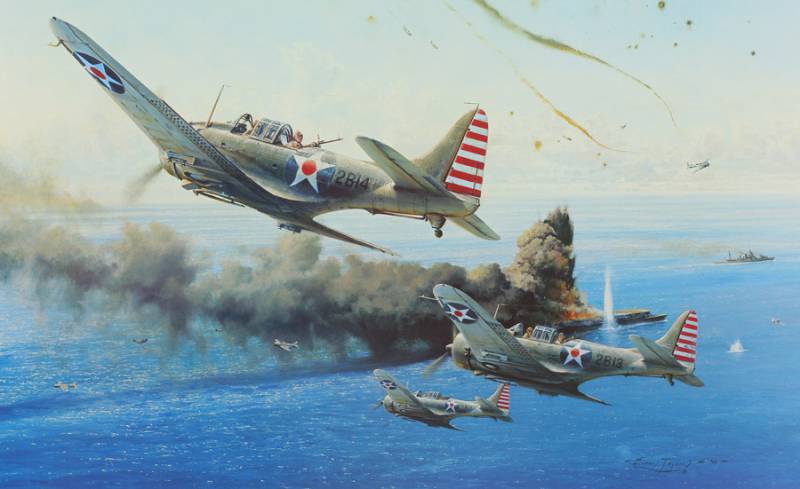
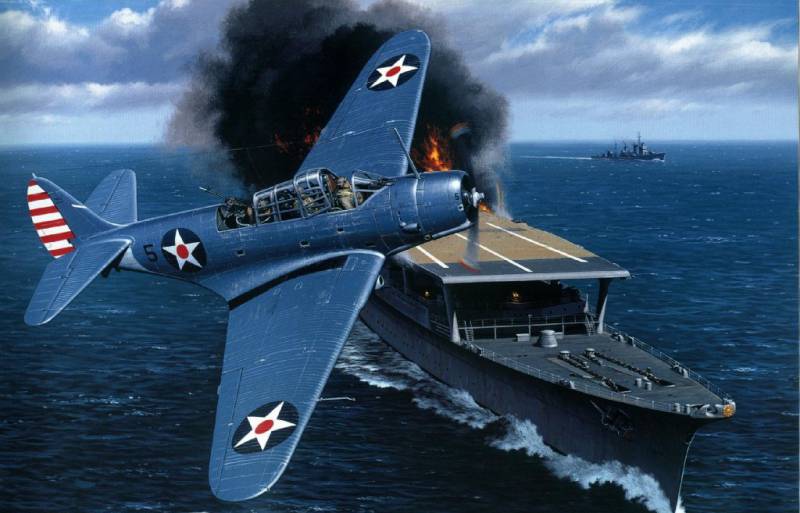
Information